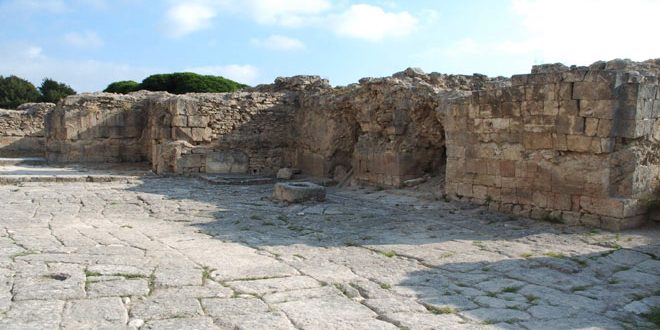Damascus, SANA- Archeologists agree on the great historical importance of Ugarit archeological city in Lattakia coastal province which enjoys a significant position on the map of the ancient civilizations in the East as it represents the cultural process which Syria has passed through.
“Ugarit and its Cultural Role” was the title of a lecture delivered by archeologist Ali al-Qayyem at Abu Rumaneh Cultural Center in Damascus on Monday evening on the 90th anniversary of starting archeological research at Ugarit Kingdom.
Al-Qayyem said that the most important discovery in Ugarit is its revolutionary alphabet which summarized the cuneiform signs from 600 to 30 letters that became the basis of the international alphabet. 
The Ugaritic language has been taught at many international universities from decades and it has gained its own world which has been on the international level as the “Ugaritology”, in addition to an international magazine named after it “Ugaritica”.
Eight thousand cuneiforms including legends, prayers, literatures, scriptural texts and economic, trade and industrial contracts were also discovered in Ugarit Kingdom, which indicate the richness of the site and the diversity of the cultures it embraces, according to al-Qayyem.
He indicated that some of the Hurrian and Akkadian texts uncovered at the site were written on cuneiforms according to the Ugaritic style.
“The unearthed cuneiforms in Ugarit (modern Ras Shamra) are still gaining admiration till the current time as they include legends, rituals, alphabets, school exercises, dictionaries and stamps, and they constituted the most ancient alphabetic literature in old world,” al-Qayyem said.
He noted that the Ugaritic language is the closest language to the Arabic and that the locals in Lattakia are still using words which belong to the Ugaritic language
The documents and inscriptions at the Ugaritic royal palace show the close trade relation between Syria and Egypt and the Hittite Empire at that time and the social and administrative life at those cultures.
The exchanged letters between senior officials in Ugarit also reflect the extent of their interest in cultivating grains and olive trees, and breeding cows, goats and poultry, in addition to the progress of the industry of textiles, bronze and other metals in Ugarit.
Al-Qayyem concluded his lecture by affirming that archeologists had discovered an Ugaritic lyric, a song directed to the God of the moon and a tablet representing the earliest and most primitive forms of musical notation.
A document describing the phenomenon of the solar eclipse in a very precise and detailed way was also discovered by archeologists at Ugarit Kingdom.
During the lecture, a documentary prepared by Dr. al-Qayyem was also screened, which touched upon the Ugaritic civilization along with showing images of the archeological discoveries in Ugarit.
Dr. al-Qayyem is a specialized archeologist who has practiced the archeological work through many training courses and he has represented Syria at some archeological expeditions.
Ruaa al-Jazaeri
 Syrian Arab News Agency S A N A
Syrian Arab News Agency S A N A




